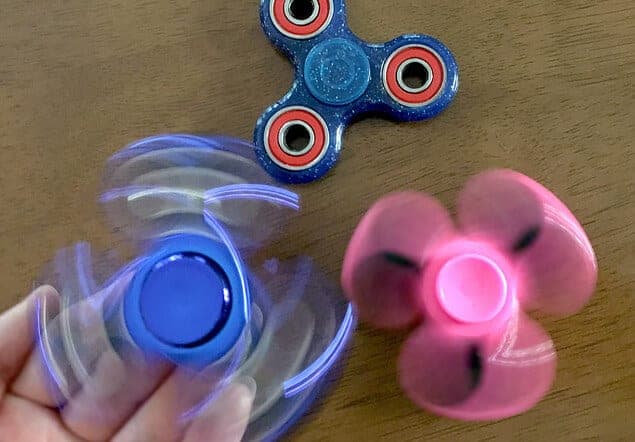The fidget spinner has taken the world by storm, with this toy in the hands of millions of children (and adults) in a matter of just a few months.
However, this wildly popular gadget can pose a potential hazard for young children, as more and more accounts of choking come to light.

The World Against Toys Causing Harm organization, also known as W.A.T.C.H., is currently investigating two choking incidents involving fidget spinners. The two incidents were caused by the swallowing of small pieces that separated from the fidget spinner and were ingested by the child. One of the instances took place in Texas and one in Oregon, and both visits required a trip to the hospital, with one child even requiring surgery. Thankfully, neither child died, as choking remains one of the leading causes of death in young children.
In light of these events, it was brought to light that these fidget spinners do not come with the required warning label from the United States Toy Association. Products such as these must include a warning if a choking hazard is present. It is rumored that the cause for this was the sudden rush to market as these gained popularity so quickly. The U.S. Toy Association released information on the fidget spinners, urging parents to use caution when considering purchasing these toys.
Related: Party Danger – Balloons Pop Louder Than 12-Gauge Shotgun Blasts
“Do not be lulled into a false sense of security that a toy is safe simply because it is popular,” said Joan Siff, President of W.A.T.C.H. Joan Lawrence, senior vice president of the Toy Association’s standards and regulatory affairs also added: “A good rule of thumb: if a fidget spinner doesn’t look sturdy or doesn’t have any age or safety labeling, don’t risk it with your child.”

These toys are coveted by children all over the world, and millions of them already have fidget spinners in their hands. It is unfortunate that these may pose a very real and present danger to the children for whom they were made, but there is a danger, and it is important to proceed carefully. The U.S. Toy Association suggests that parents follow age labels, shop at reputable retailers, and check for broken parts or pieces that might separate.
Jonathan Judge, a juvenile products liability partner at the Chicago-based law firm Schiff Hardin, weighed in on the subject.
“Unlike fad toys of the past, where one manufacturer brands and promotes a new product, nobody has a meaningful trademark, copyright or patent on a fidget spinner. When a major retailer or manufacturer comes up with the design for a new toy, that makes it a little easier from a safety standpoint, because you know who’s running the train. But anyone can create a fidget spinner and market it. In fact, the direct-to-consumer model fueled the toys’ popularity. Many of the fidget spinners are made overseas and sold online here, where they’re in high demand,” Judge said.
Related: Pet Dogs Help Children Feel Less Stressed
Marissa is a health and fitness writer from the Tampa Bay area. In addition to researching the latest trending topics, she enjoys instructing kickboxing classes and posting incessantly to her Instagram account.


![How To: ‘Fix’ Crepey Skin [Watch]](https://cdn.vitalupdates.com/wp-content/uploads/2017/05/bhmdad.png)












